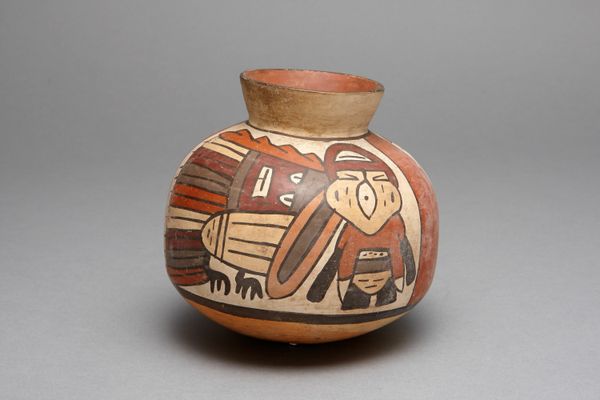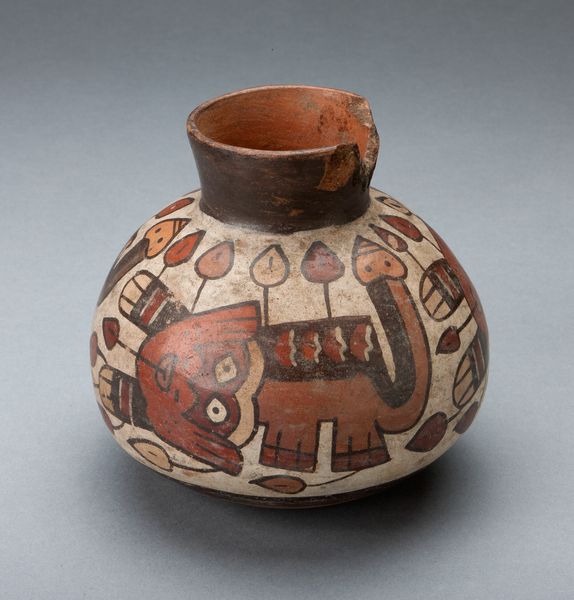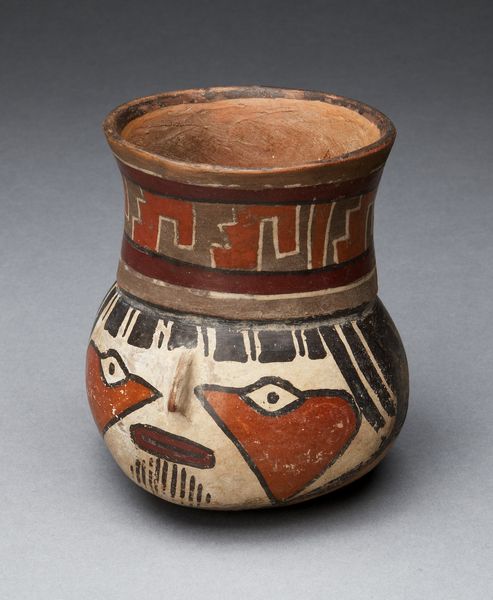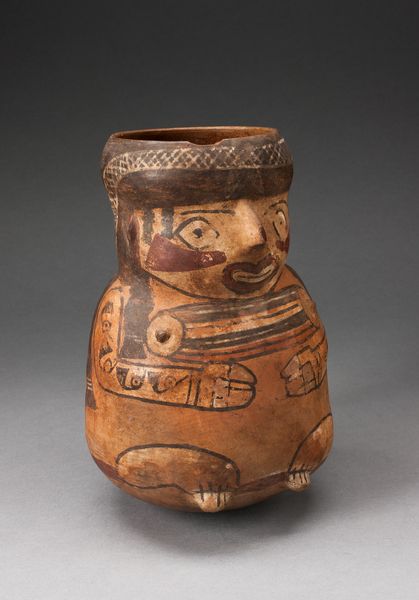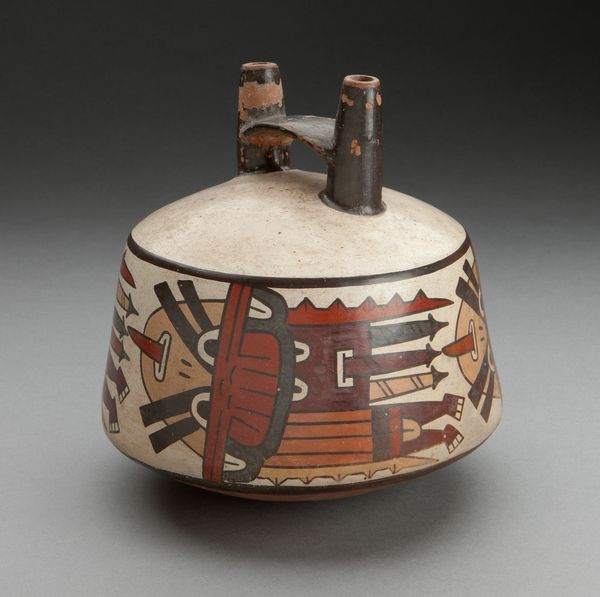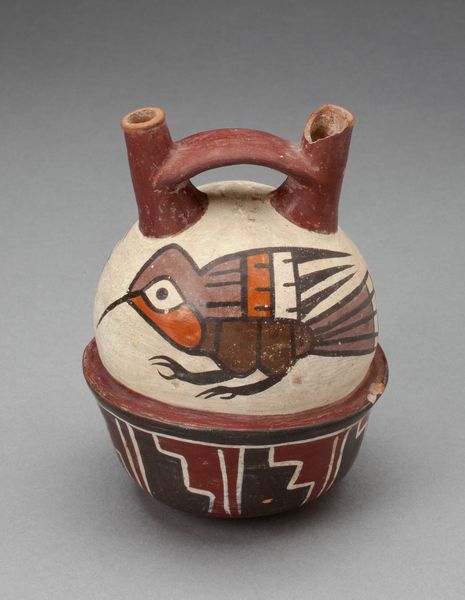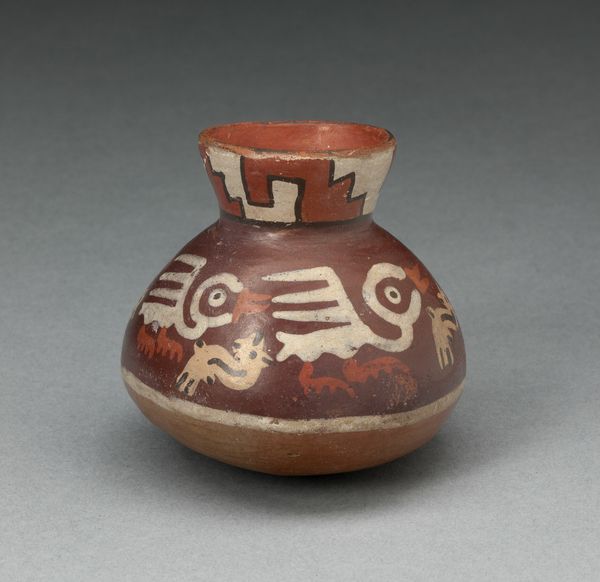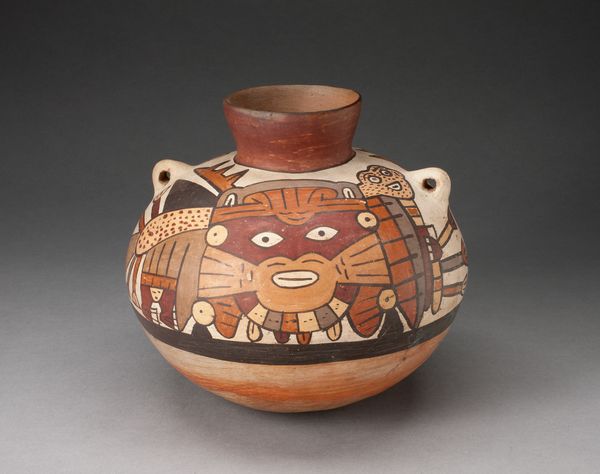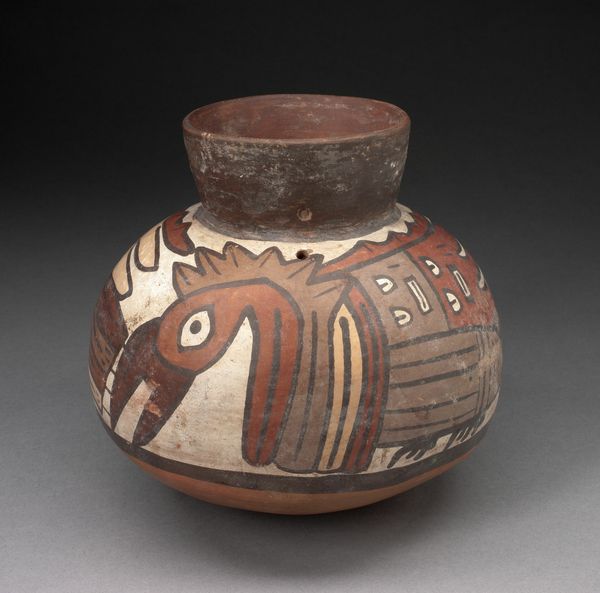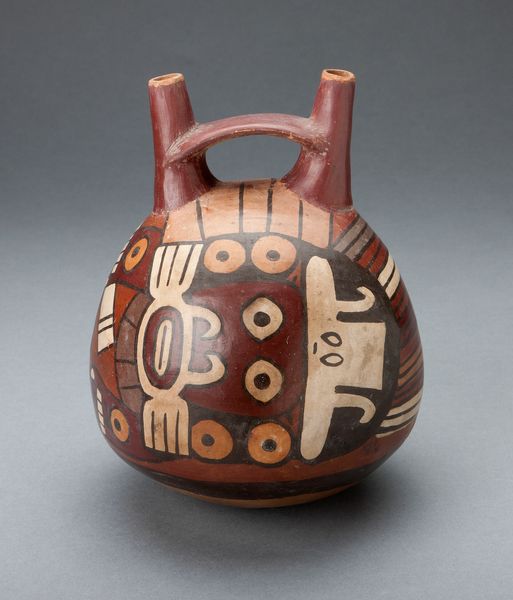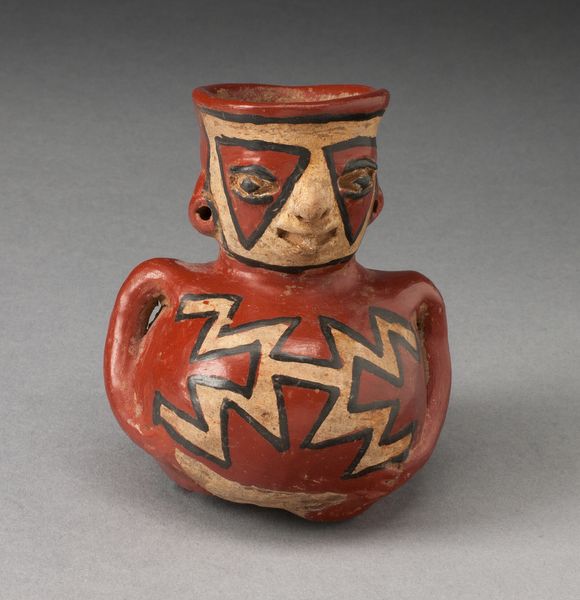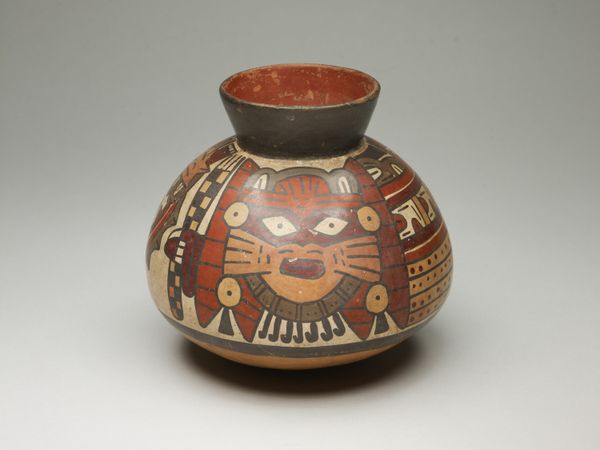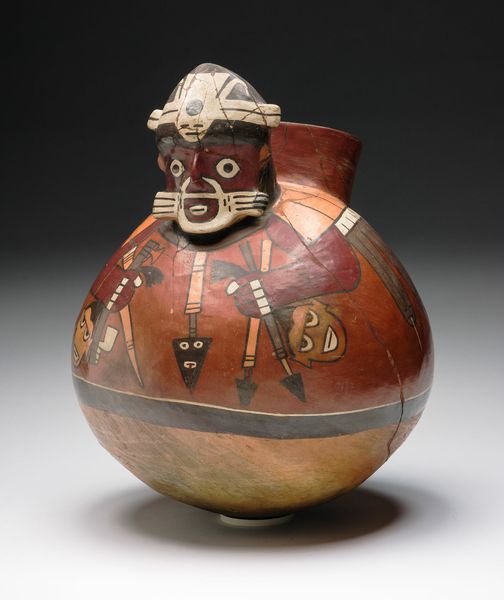
Single Spout Vessel in the Form of a Figure Holding a Fishing Net c. 180 - 500
0:00
0:00
ceramic
#
ceramic
#
figuration
#
ceramic
#
indigenous-americas
Dimensions: 17.8 × 16.8 cm (7 × 6 5/8 in.)
Copyright: Public Domain
Editor: Here we have a ceramic piece from the Nazca culture, circa 180 to 500 AD, called "Single Spout Vessel in the Form of a Figure Holding a Fishing Net". It's really striking! The figure emerging from the vessel has a definite presence. What do you see in this piece beyond just the depiction of a fisherman? Curator: This piece provides such rich insights into the socio-political landscape of the Nazca people. Beyond the literal representation, we see a culture deeply connected to its environment and potentially reliant on fishing. How might the figure’s attire and adornments reflect social status or ritual roles within the community? Editor: I hadn't really considered that aspect. His headdress definitely seems significant. Is there any evidence to suggest how integral fishing was to their identity or power structures? Curator: Absolutely. Archaeological findings, including depictions of marine life in other Nazca art, confirm the ocean’s importance. This vessel could be a symbol of prosperity or even an offering to ensure bountiful catches. Consider, too, that the controlled resources and access were a basis for societal hierarchy; how could the representation of that labor translate power into artistic expression? Editor: So, it’s less about a simple job, and more about the societal implications surrounding the role of fisherman. The vessel then almost becomes a kind of social document. Curator: Precisely! And thinking intersectionally, how might gender roles be embedded in the artistic expression of fishing, since it's predominantly considered men’s labor in our understanding? It provokes a range of thoughts on how gendered work influences representation and social standing. Editor: That makes me think about how contemporary artists are exploring those kinds of power structures even now. I see how rooted art is in social realities. Curator: Exactly, understanding this context enriches our appreciation of not just the piece’s aesthetic, but its voice within a larger historical narrative.
Comments
No comments
Be the first to comment and join the conversation on the ultimate creative platform.
